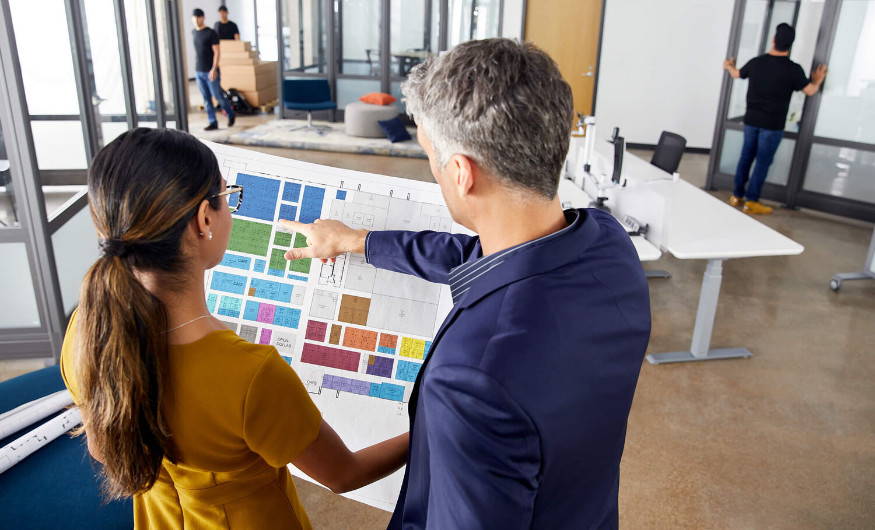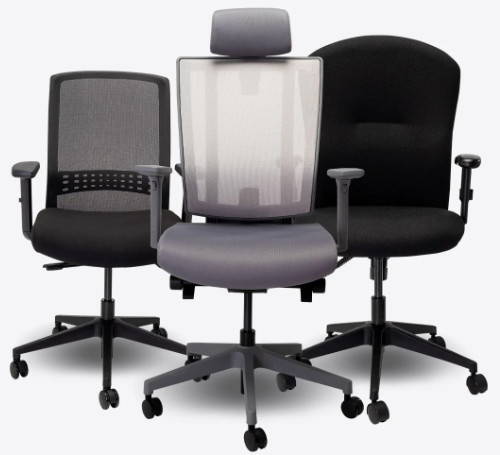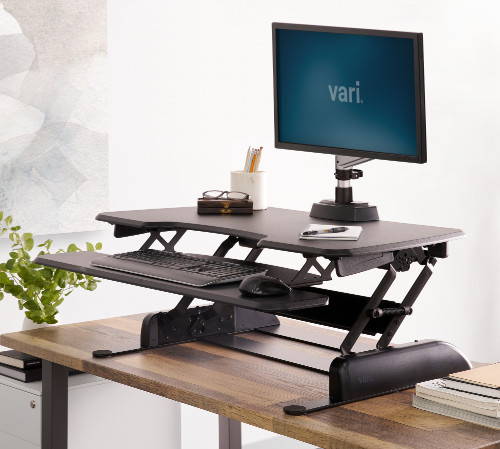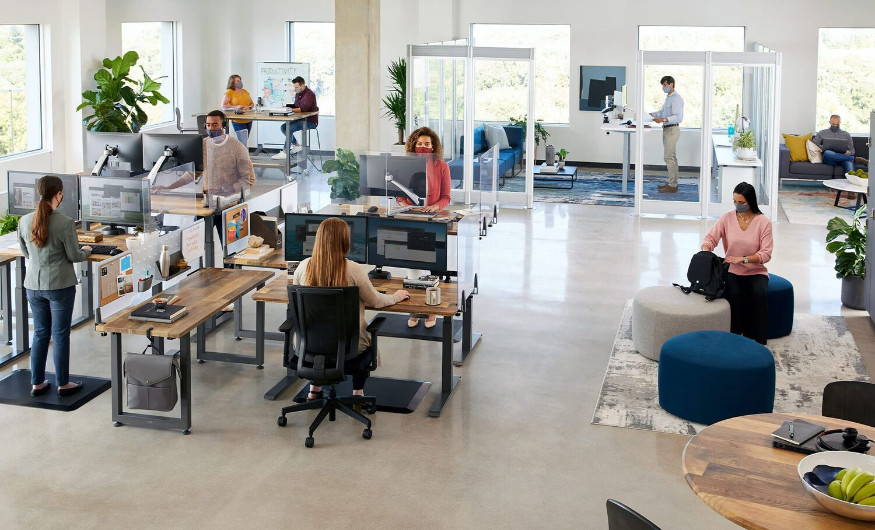Ergonomic office lighting can transform a drab workspace into a dream concentration zone. Poor lighting can lead to bad posture, eye strain, and headaches, so ensuring you provide optimum lighting for your employees will boost your business’ day-to-day productivity.
Start by considering how you can make maximum use of the natural light available in the space as this is the more cost-effective approach and one of the most important factors when it comes to ergonomic office lighting. A 2018 study by Cornell University found that workers in naturally lit offices experienced 84% less eye strain, headaches, and blurred vision as well as a 10% reduction in drowsiness than those with more artificial lighting!
Open-plan workspaces require high illumination, so natural light will need to be complemented by recessed ceiling lights, with additional spotlights or downlights to illuminate any remaining dark spots.
In production rooms, use a cooler light tone to aid concentration, while in communal spaces, a mix of warmer, dimmable lights and accent lights will help create a more relaxing atmosphere. A balance of both tones is necessary for a sense of balance at work.





